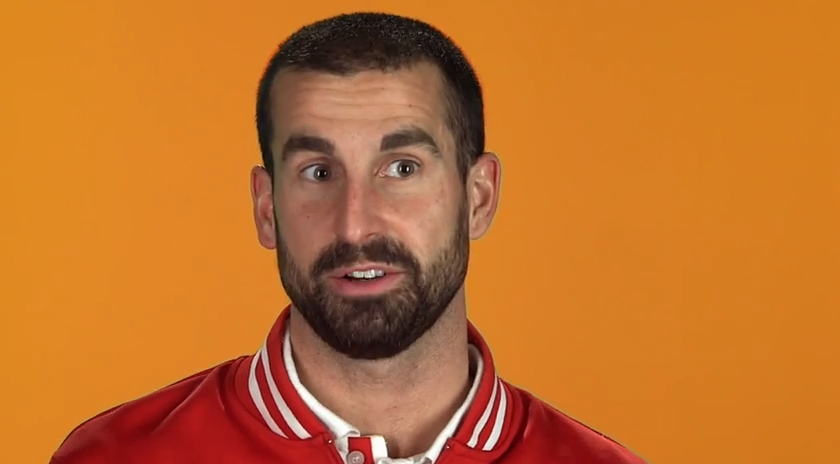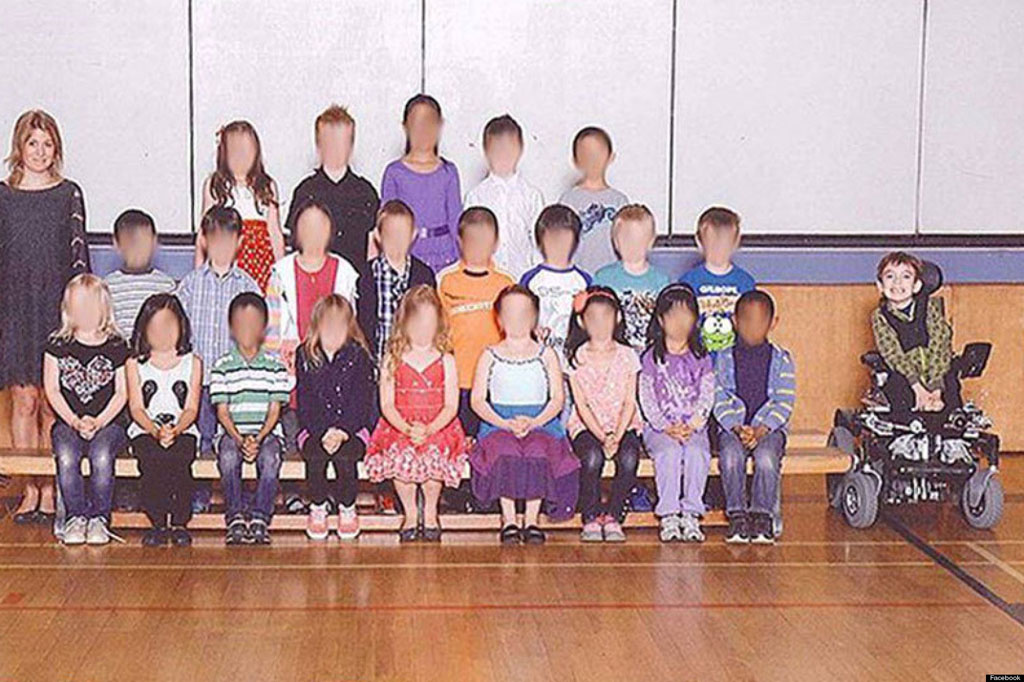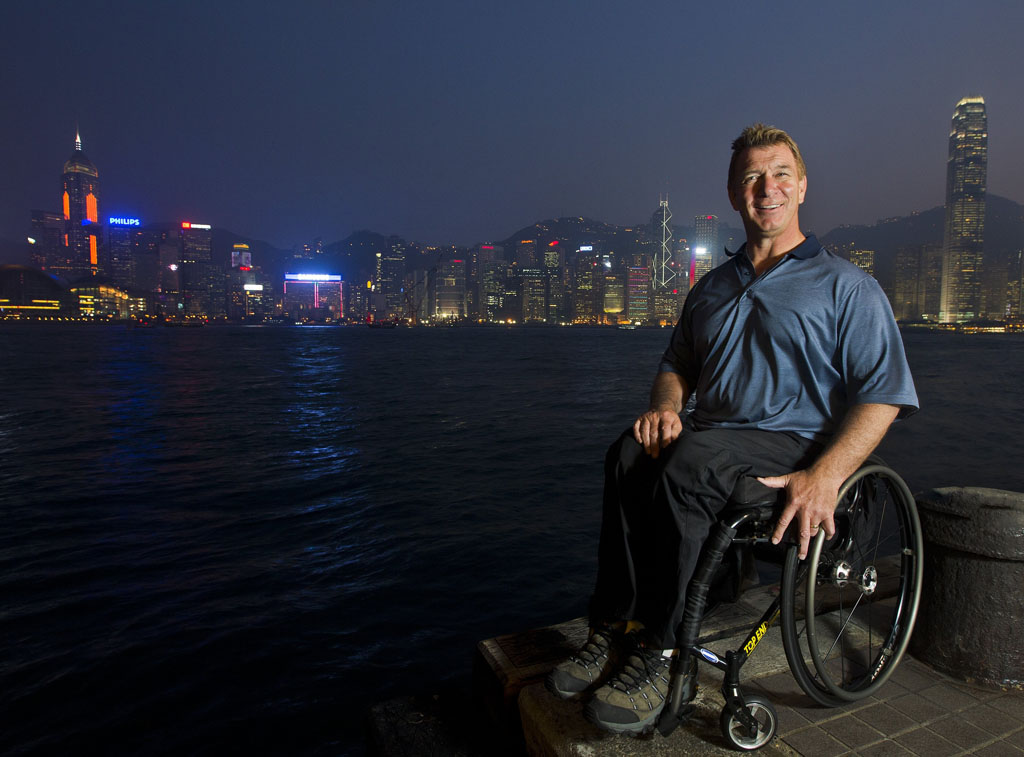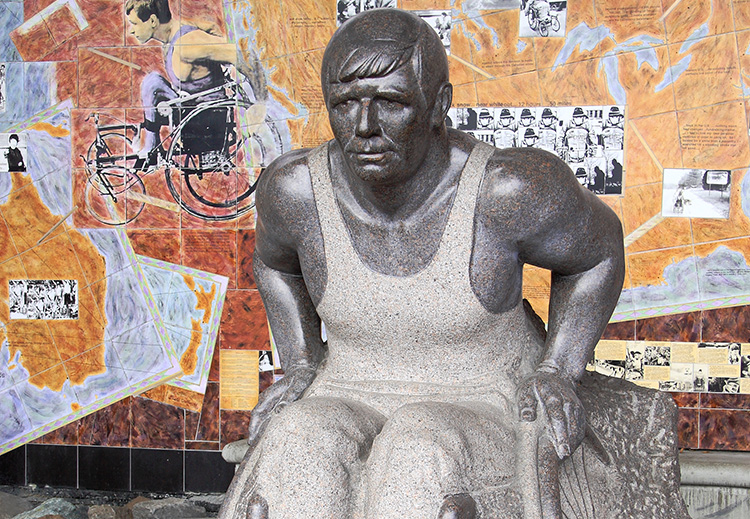|
Unit 1: Human Rights
Chapter 4: The Rights of Persons with Disabilities
 |
|||||||||||||||||||||||||||||||||||||||||||||||||||||||||||||||||
Educator Tools
|
|||||||||||||||||||||||||||||||||||||||||||||||||||||||||||||||||
| Facing Our Assumptions: Thinking About the Rights of Those who Identify as Disabled | ||||
|---|---|---|---|---|
| Circle one response to following statements: STRONGLY AGREE (SA) /AGREE (A) /DISAGREE (D) /STRONGLY DISAGREE (SD) |
||||
| 1. People who are deaf are less likely to succeed in life. | SA | A | D | SD |
| 2. People with dyslexia have a disability. | SA | A | D | SD |
| 3. People who work really hard can overcome any obstacle, including mental illness. | SA | A | D | SD |
| 4. Students who use wheelchairs cannot take physical education or dance classes. | SA | A | D | SD |
| 5. It is impossible to accommodate ALL students with disabilities in one school. | SA | A | D | SD |
| 6. Not every student with a disability can be integrated into a regular classroom. | SA | A | D | SD |
| 7. All students should be treated equally. | SA | A | D | SD |
| 8. Students who identify as being disabled are not discriminated against in the school system. | SA | A | D | SD |
| 9. Someone who requires a wheelchair should not teach in elementary schools. | SA | A | D | SD |
| 10. More money for programming should go to special needs students vs. extracurricular activities. | SA | A | D | SD |
| 11. Restaurants accommodate all people. | SA | A | D | SD |
ACTION 2
Discuss
Class Picture: A Human Rights Case
A. Examine this photograph of a grade two class in British Columbia. When the parents of seven-year-old Miles Ambridge saw their son set aside from the rest of the class they reported the incident to raise awareness of how such things could be hurtful to those who identify as disabled.
In small groups, discuss:
- What are your initial reactions to this photograph?
- What decisions, if any, do you think were made by the photographer? The teacher?
- How do you think the boy in the wheelchair felt when this picture was taken?
- How would you feel if you were the parents of the child?
- What other choices do you think could have been made in setting up this photograph?
B. When Miles’s father saw this picture he was “disgusted and appalled” that his son with spinal muscular atrophy was ostracized in this class photo. The following is an excerpt of an article that appeared in Canadian newspapers in June 2013:
“It’s wrong, but it doesn’t mean it was intentional. It just means that somebody dropped the ball for a moment and that can be incredibly hurtful . . . This was not a malicious act, I don’t think it was done on purpose. I just don’t think there was any rational thinking behind it,’ Miles’s stepfather, Mr. Belanger, said. The school took another class photo. Miles’s mother called the new photo “gorgeous” as her son was taken out of his wheelchair and given pride of place on the front row, right next to his classroom assistant.
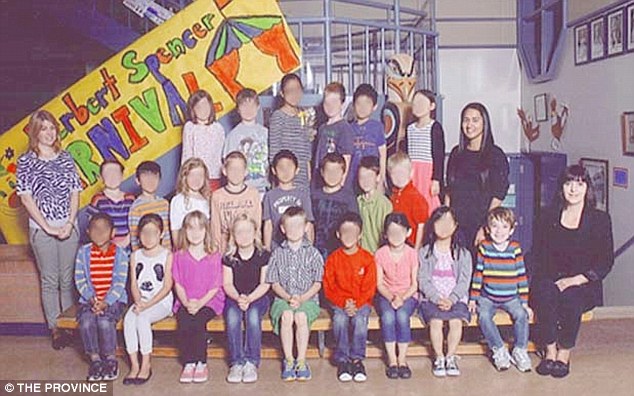
Imagine that you had a chance to respond in one hundred words or less to this story, what might you say? What suggestions would you make to the school for dealing with the situation; did they do the right thing by re-taking the class photo? What advice might you offer to the parents to protect their son’s human rights?
C. Reflection
In small groups, discuss:
- How does this story inform you about the human rights of an individual?
- What other stories with which you are familiar concern those with disabilities whose rights have been challenged or jeopardized?
- The teacher and the photographer stated that they did not intentionally mean any harm in setting Miles Ambridge apart from his classmates. How can we raise awareness and educate others to examine their behaviours and attitudes to those who have a disability?
Rick Hansen, 25th Anniversary Relay Tour, 2011
Source: www.hellovancity.com
ACTION 3
Do
RICK HANSEN: A Canadian Human Rights Hero
June 27, 1973
On the way home from a fishing trip, Rick and his friend Don Alder are in a car accident and are thrown from the back of a pickup truck. Rick injures his spinal cord and is paralyzed from the waist down.
1979-1984
In five years, Rick wins 19 wheelchair marathons, three world titles, and 15 medals: 6 at the Paralympic Games and 9 at the Pan Am Games. He’s also Canada’s Disabled Athlete of the Year in 1979, 1980, and 1982.
March 21, 1985
Rick and his team leave Vancouver to embark on the Man In Motion World Tour, a journey around the globe to prove the potential of people with disabilities and raise awareness for accessibility.
May 22, 1987
Rick and his team complete the World Tour and return to Vancouver. The Tour raised $26 million for spinal cord injury research, rehabilitation, and sport.
The Rick Hansen Story (Excerpt)
by Dennis Foon
Canadian playwright, Dennis Foon, has written the play Rick: The Rick Hansen Story, that tells the story of Rick Hansen’s accident and subsequent adjustment to his paralysis. In the following excerpt, Rick has just returned to school and shares his frustration with a friend.
Don: You okay?
Rick: This is all wrong. It shouldn’t be like this.
Don: What do you mean?
Rick: I can’t get up the stairs to get into school. I can’t get into stores or restaurants. I can’t even get my chair across the street because of the curbs.
Don: Your dad built you a ramp.
Rick: It was that or he’d have to buy me a tent to live in . . . except they don’t make any a wheelchair can fit.
Don: Anyhow—the coach wants to see you in the gym.
Rick: Why?
Don: Don’t ask me. I’m just the messenger. You coming?
Rick: Sure let’s go.
(Don and Rick move together, both facing the audience. As if staring in through the doors of the gym. Rick stops at the sound of a practice, balls bouncing, shouting, the coach’s voice barking instructions. Rick freezes, overwhelmed.)
Don: The volleyball team is hopeless without you.
Rick: They’re doing fine.
Don: Well, the coach is waiting.
Rick: (distraught): I can’t go in there. I can’t. (Rick wheels away)
Don: What’s wrong?
Rick: I gotta go –
Permission granted, Playwrights Canada Press
A. Reading and Responding to the Script Excerpt
Read the script independently, then work with a partner to discuss the following:
- What are two things you learn about Rick Hansen from this excerpt?
- What is frustrating Rick about his disability?
- How has Rick’s life changed as a result of his disability? How prepared are Rick’s friends and teachers to deal with Rick’s circumstances?
- What do you think the coach might say to Rick? What might Rick say to his coach?
- What advice might you give his friends? The coach? To Rick?
- Mr. Hansen is a hero and role model, but do stories like this create unrealistic expectations for those with disabilities?
B. Interpreting the Script
With a partner, choose a role to read aloud from this script. Repeat the activity, switching roles. To rehearse this script, actors might play their roles in different ways. Once you have decided upon a role to practice, choose one of these attitudes / emotions to interpret the lines (e.g., Rick could be calm and Don could be angry; both characters could be angry, etc.)
- calmly
- with anger
- with hesitation
- with sadness
- apathetic, uncaring
C. Rehearsing the Script
As an actor rehearses, he or she explores a variety of emotions to inform how to best convey the meaning of the texts. Experiment with a few different ways to read these lines, and with your partner discuss which way seemed like the most authentic theatre presentation (i.e., how would each character feel as they continue the conversation?).
Once you have rehearsed the scene, present it to another pair and compare different interpretations.
D. Writing a New Scene
- This scene describes one example of how a person with a disability struggles in the world. In small groups discuss other situations when Rick’s rights, (or someone like Rick) would be jeopardized. What struggles might he encounter in maintaining his rights as a student in school, at home, and in the greater community? What solutions might be offered to meet these challenges?
- In pairs, or small groups, prepare a new scripted scene in which Rick appears. For this scene, consider:
- Which characters might appear in the scene?
- What is the setting?
- How will the particular challenge be conveyed?
- What information and feelings will your scene represent about the human rights of a person who has a disability?
- Once completed, rehearse the scene with your group to present to others who have worked on a different scene (the complete Dennis Foon script of Rick: The Rick Hansen Story is available through Playwrights Canada Press).
- What are some interesting facts you might learn about Rick Hansen’s accomplishments as an athlete, as a person? More information about Rick Hansen and the Rick Hansen Foundation is available online.
- After his accident, Rick Hansen became a paralympic athlete winning several medals. The Paralympics follow the Olympic games every four years, bringing together athletes from around the world to compete in a variety of sports. Using the Internet, research other athletes to discover their stories and find out how they became Olympic winners.
ACTION 4
Do
A New Symbol for People with Disabilities
David Onley, Lieutenant Governor of Canada, battled polio in his childhood that resulted in partial paralysis. Today, he is able to walk using leg braces, crutches, or canes but he prefers to move around in his electric scooter.
In 2013, Onley challenged Canadian secondary students to submit designs for a more inclusive and accessible symbol of disability. Onley notes that even though 97 percent of people with disabilities in North America don’t use wheelchairs or electric scooters, they have a definite disability. The traditional symbol that features a stick figure is not, according to the Lieutenant Governor, inclusive.
Though thousands of designs were submitted, a winner was not declared. The Lieutenant Governor claimed that designs fell short of conveying the complex needs of people with disabilities. The challenge with a design is to ensure that people are not left out and that recognition is given beyond just those in a wheelchair. An honourable mention was given to the design below.
A. This activity requires you to rethink a symbol that has been valuable and transformed access for disability, but limits how disabilities are represented in many ways. Working alone or with a partner, create a new symbol design using an art medium of your choice. Consider:
- What are your views of the traditional disabled stick figure in a wheelchair?
- How might a symbol be more humanized? More inclusive of other disabilities?
- What colors, shapes, objects and / or characters do you think could be used?
- Should there be any words included in the symbol?
Search for an example of another symbol, e.g. Beijing Paralympics symbol.
Further images: http://bit.ly/disabilitysymbols
Discuss
B. Once you have completed a design, meet with your classmates to discuss submissions. For your discussion, you can imagine that you are members of a jury making choices for a symbol that effectively captures disabilities and that could be understood across different cultures.
Where in the school and local community might these designs be displayed?
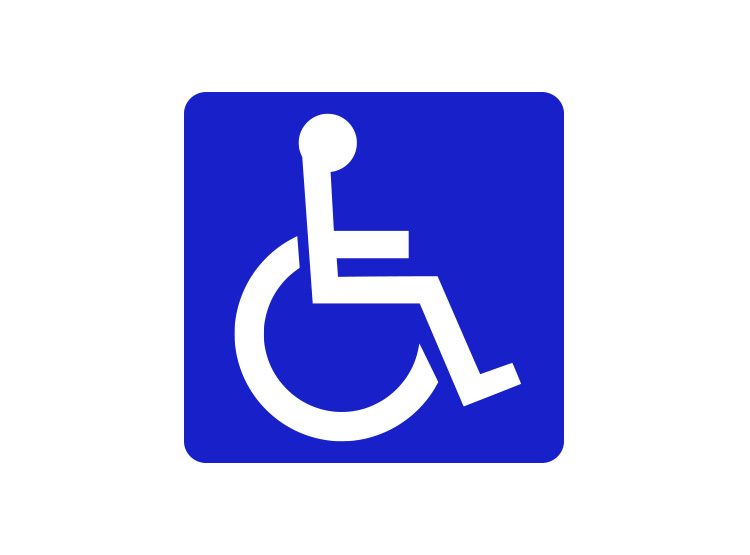
Current sign (blue)
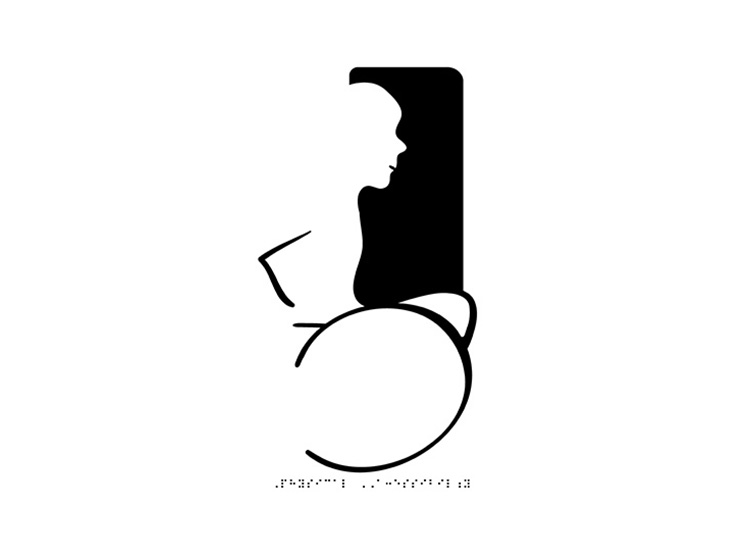
Submission for Competition (black)
Source: Permission received by author: Credit: Copyright 2013 Tom Pokinko
Every effort has been made to gain permission from copyright holders to reproduce borrowed material. The publishers apologize for any errors and will be pleased to rectify them in subsequent reprints and website programming
Educator Tools

